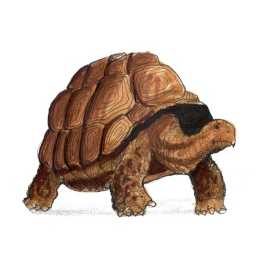Aren’t These All Turtles?
You might have read the title of this article and thought to yourself, “I recognize ⅔ of these reptile groups; what is a terrapin?” Today we will be talking about the differences between tortoises, terrapins, and turtles. On a technicality, these are all different types of turtles. There is much debate on this in the reptile community, because of all the different types of classifications. Remember this rule: Tortoises and Terrapins can be turtles, but not all turtles can be tortoises or terrapins.
Before we dive into all the many reasons why all of these shelled creatures are different, let’s refresh or enlighten our minds on what a Chelonian is. Chelonian is the umbrella term for tortoises, turtles and terrapins. You will see this word often in future and present blog posts, so that when I am talking about information on more than one different category you will know it applies to each type.
What Are The Different Types Of Chelonians?
So we’ve covered that there are Tortoises, Turtles, and Terrapins. But now we need to go over the differences, and the reasons why it’s so important to correctly label them. There are many key differences, and I will go over the smaller ones later. These chelonians can be classified by their rib structure, and their limbs. A tortoise will have a round foot. A turtle will have webbed feet, or flippers (flat limbs). A terrapin will always have webbed feet, and live in brackish water.
TortoiseLand is notorious for its tortoises, but there is also a great range of different turtles. There are some turtles that live in water that come on land to sunbathe, and some that stay on land, but go in the water occasionally to take a little swim, or soak. For example, we have the Three Toed Box turtle, which is a turtle that lives and hunts near water, but stays on land. They are often confused for tortoises for many reasons, such as their hard domed shells, and their preference to stay on land. These are features that mainly make a tortoise… a tortoise! The Box turtle also has less webbing than a common aquatic turtle, like the Yellow Belly or Red Eared Slider- which we also have at TortoiseLand!
Terrapins
Terrapins are turtles that have many misconceptions on how to identify them. They have been scientifically classified in such a controversial way, it is hard to agree when it comes to these guys! While others think any turtle that isn’t a tortoise or sea turtle is a terrapin, I respectfully don’t think that is right. I agree with the classification that they live in brackish water, and have webbed feet. Terrapins, unlike freshwater turtles, have special glands around their eyes that excrete the salt of brackish water, similar to sea turtles! However, they are not sea turtles, because terrapins live in a mix of freshwater AND saltwater habitats. Turtles like the slider family only live in freshwater sources.
Tortoises
Tortoises can be identified dead to rights. Tortoises will always have a round foot, and stay on land. They will find shallow water to bathe and drink from. Some tortoises are omnivores, like the RedFoot tortoises we have at TortoiseLand. Most tortoises live a life munching on vegetation only. However, all chelonians are opportunistic eaters, and will snack on the occasional carcass if food is scarce. They will also eat bones if they are lacking a certain vitamin or nutrient in their diet.
2 young Red Footed Tortoises
Photo taken Dec. 26th 2023 at TortoiseLand
Turtles
Turtles are separated into two different categories. The first category which is the most recognized, are the turtles with flippers. The turtles with the flippers can be found in freshwater and saltwater. An example of a freshwater turtle with flippers, is the Fly River turtle. An example of a saltwater turtle is the Green sea turtle. Both of these flipper-having turtles live their lives in the water, but come on land to lay eggs.
Fly River Turtle
Photo taken Dec. 18th at California Academy of Sciences Museum
The second category is the webbed feet turtles. These are turtles like the Red Eared Slider turtle, and the Musk turtle. They live in water, but spend a lot of their time basking on rocks and logs floating around in their water source. This water source is typically a pond or river, depending on the species of turtle, and its location.
George, the Red eared Slider
Picture taken by his mom, aka the author of the TortoiseLand Blog Dec 30th 2023
Are The Turtle Police Going to Arrest Me For Using The Wrong Word?
The short answer is no, but it’s going to make some people get technical. If you’re one of those people who get technical, make sure to use this article for proof that each type of chelonian is extremely different, and deserves their own classification.
Jahleena Nin-Marroquin 02/05/2024
